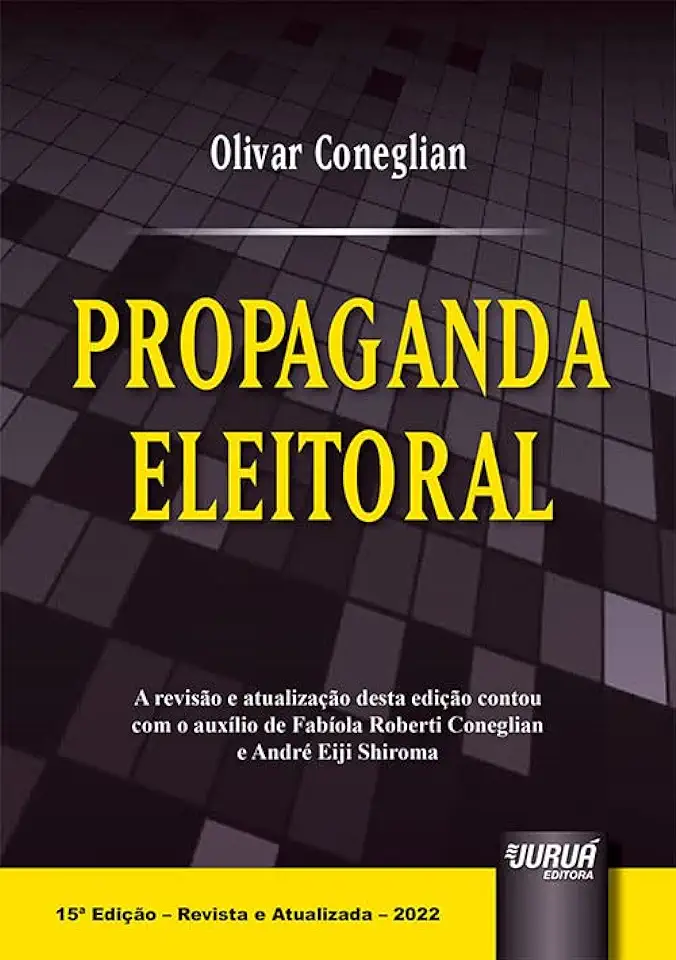
Electoral Propaganda - Olivar Coneglian
Electoral Propaganda: The Art of Winning Elections
Introduction
In today's political landscape, electoral propaganda has become an essential tool for candidates and political parties to reach voters and win elections. From billboards to social media, candidates use a variety of methods to communicate their message and persuade voters to support them.
In his book, "Electoral Propaganda: The Art of Winning Elections," Olivar Coneglian provides a comprehensive overview of the history, theory, and practice of electoral propaganda. Coneglian draws on a wealth of examples from around the world to illustrate how propaganda is used to shape public opinion and influence voter behavior.
The History of Electoral Propaganda
The history of electoral propaganda can be traced back to the ancient Greeks and Romans, who used public speeches, posters, and pamphlets to promote their candidates. In the United States, the use of propaganda in elections began in the early 19th century, with the rise of political parties. By the 20th century, propaganda had become a sophisticated and powerful tool, used by both major political parties to win elections.
The Theory of Electoral Propaganda
Coneglian argues that electoral propaganda is a form of communication that is designed to influence voter behavior. He identifies three main types of propaganda:
- Informative propaganda: This type of propaganda provides voters with information about the candidates and their positions on the issues.
- Persuasive propaganda: This type of propaganda attempts to persuade voters to support a particular candidate or party.
- Negative propaganda: This type of propaganda attacks the opposing candidate or party in an attempt to turn voters away from them.
Coneglian also discusses the role of media in electoral propaganda. He argues that the media plays a crucial role in shaping public opinion and influencing voter behavior. By controlling the flow of information, the media can determine which issues are discussed and how they are framed.
The Practice of Electoral Propaganda
Coneglian provides a detailed overview of the various methods that candidates and political parties use to communicate their message to voters. These methods include:
- Advertising: Candidates and political parties use advertising to reach a large number of voters. Advertising can take many forms, including television commercials, radio ads, print ads, and online ads.
- Public relations: Candidates and political parties use public relations to build relationships with the media and get their message covered in the news. Public relations can include press conferences, interviews, and speeches.
- Direct mail: Candidates and political parties use direct mail to send personalized messages to voters. Direct mail can include letters, postcards, and brochures.
- Social media: Candidates and political parties use social media to connect with voters and spread their message. Social media can include platforms such as Facebook, Twitter, and Instagram.
The Impact of Electoral Propaganda
Coneglian argues that electoral propaganda has a significant impact on voter behavior. He cites a number of studies that show that propaganda can influence voters' perceptions of the candidates, their positions on the issues, and their likelihood of voting for a particular candidate or party.
Conclusion
In conclusion, Olivar Coneglian's book, "Electoral Propaganda: The Art of Winning Elections," provides a comprehensive overview of the history, theory, and practice of electoral propaganda. Coneglian draws on a wealth of examples from around the world to illustrate how propaganda is used to shape public opinion and influence voter behavior. This book is a must-read for anyone interested in politics and the role of propaganda in elections.
Call to Action
If you are interested in learning more about electoral propaganda, I encourage you to read Olivar Coneglian's book, "Electoral Propaganda: The Art of Winning Elections." This book is a valuable resource for anyone interested in politics and the role of propaganda in elections.